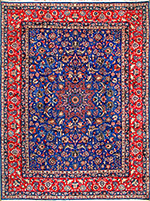Textiles Studies

Textile Research Works
Date of this Version
10-1973
Document Type
Article
Citation
Journal of Near Eastern Studies, 32:4 (Oct, 1973), pp. 424-434.
Abstract
Excavations at Korucutepe have brought to light a fortification wall of a type common in Anatolia during the second millennium B.c. The wall had been exposed in places by bulldozing operations for a government farm. Excavation revealed a plan consisting of a curtain wall with a double stone foundation (see fig. 7). Square towers project at intervals where the direction of the wall changes. Adjacent to two of the towers is a passageway, one on the south side of the mound, one on the northeast, leading out from the city. There is no indication of any cross walls, or casemates, as found at other Anatolian sites. ...
The defense wall at Korucutepe falls into a relatively unknown, but potentially very important period of Anatolian history, between the time of Karum Ib at Kiiltepe-Kane', and the beginning of the Old Hittite kingdom. With the advent of red and orange slipped pottery, the period during which Korucutepe was heavily fortified must represent early Hittite-Hurrian relations. The conflagration is certainly an during this volatile period. Further research and excavation in areas unaffected by the serve not only to illuminate this relatively unknown and sparsely of Isuwa on the borders of the lands of Hatti, but also to shed more ment of Hittite power in Asia
Included in
Art and Materials Conservation Commons, Art Practice Commons, Fiber, Textile, and Weaving Arts Commons, Indigenous Studies Commons, Museum Studies Commons


Comments
Published by The University of Chicago Press.